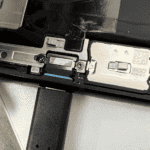Gaming monitors offer various features to enhance your gameplay experience. One such feature is 1ms Motion Blur Reduction. This technology aims to reduce motion blur and make fast-moving images clearer.
To turn on 1ms Motion Blur Reduction, access your monitor’s on-screen menu, navigate to the game settings, and enable the feature. Some monitors may require you to set the refresh rate to at least 120Hz before this option becomes available. Keep in mind that enabling this feature might decrease screen brightness due to backlight control.
While Motion Blur Reduction can improve image clarity, it’s not always the best choice for every situation. Consider your gaming preferences and the types of games you play. Fast-paced action games may benefit more from this feature than slower-paced strategy games.
| Feature | Benefit | Potential Drawback |
|---|---|---|
| 1ms Motion Blur Reduction | Clearer fast-moving images | Reduced screen brightness |
| High Refresh Rate | Smoother motion | May require more powerful hardware |
| FreeSync/G-Sync | Eliminates screen tearing | Cannot be used with Motion Blur Reduction |
Understanding Motion Blur and Its Impact on Gaming
Motion blur affects image clarity during fast-paced gaming. It can impact your ability to track moving objects and react quickly. Lower motion blur leads to smoother visuals and potentially improved performance.
Defining Motion Blur and 1ms MPRT
Motion blur occurs when moving objects appear blurred on screen. This happens due to slow pixel transitions or your eyes tracking motion. 1ms MPRT (Moving Picture Response Time) refers to how quickly a pixel can change from one color to another.
Lower MPRT values reduce perceived motion blur. This creates clearer images during fast movements. 1ms MPRT is considered excellent for gaming monitors.
Some key factors affecting motion blur:
- Pixel response time
- Refresh rate
- Frame rate
- Display technology
The Importance of Low Response Time
Response time measures how quickly pixels change color. Lower response times decrease motion blur and ghosting effects.
Benefits of low response time:
- Clearer moving images
- Reduced input lag
- Better tracking of fast-moving objects
For competitive gaming, 1ms response times are ideal. They provide the sharpest visuals during rapid movements.
Higher response times can cause:
- Blurry images
- Difficulty aiming precisely
- Missed visual cues
Benefits of 1ms Motion Blur Reduction for Competitive Gaming
1ms Motion Blur Reduction technology significantly enhances gaming visuals. It creates CRT-like motion clarity on LCD screens.
Advantages for competitive gamers:
- Sharper moving images
- Easier target acquisition
- Improved reaction times
This feature is especially useful in fast-paced games like:
| Game Type | Example |
|---|---|
| FPS | Counter-Strike, Overwatch |
| Racing | Forza, Gran Turismo |
| Fighting | Street Fighter, Mortal Kombat |
Some trade-offs may include reduced brightness or disabled FreeSync/G-Sync. However, many gamers find the improved motion clarity worth it for competitive play.
How Motion Blur Reduction Technologies Work
Motion blur reduction technologies aim to sharpen fast-moving images on displays. These methods use various techniques to minimize the blurring effect that occurs during rapid motion in games and videos.
Backlight Strobing Explained
Backlight strobing is the core principle behind motion blur reduction. It works by turning the display’s backlight on and off rapidly. This creates brief gaps between frames, reducing the time each frame is visible.
The strobing effect happens so quickly that the human eye can’t perceive it. Instead, it sees clearer motion with less blur. This technique mimics how old CRT monitors displayed images, which had naturally low motion blur.
Backlight strobing can significantly improve motion clarity. But it may also reduce overall brightness and cause flickering for some users.
Different Types of MBR Technologies
Several motion blur reduction technologies exist, each with unique features:
- ULMB (Ultra Low Motion Blur)
- ELMB (Extreme Low Motion Blur)
- DyAc (Dynamic Accuracy)
- 1ms MPRT (Moving Picture Response Time)
These technologies all use backlight strobing but differ in implementation. Some work only at specific refresh rates, while others are more flexible.
ULMB, developed by NVIDIA, is compatible with G-Sync monitors. ELMB, created by ASUS, can work alongside variable refresh rate technologies.
Comparing ULMB, ELMB, DyAc, and Others
| Technology | Compatibility | VRR Support | Brightness Impact |
|---|---|---|---|
| ULMB | G-Sync | No | High |
| ELMB | FreeSync | Yes | Medium |
| DyAc | BenQ Monitors | Yes | Low |
ULMB offers excellent motion clarity but doesn’t work with variable refresh rates. ELMB provides a good balance, supporting VRR while reducing motion blur.
DyAc, found in BenQ monitors, claims to have less impact on brightness. It also works with variable refresh rates, making it versatile for different gaming scenarios.
Each technology has its strengths. Your choice depends on your specific needs and the type of monitor you have.
Step-by-Step Guide to Enabling 1ms Motion Blur Reduction
Enabling 1ms Motion Blur Reduction can significantly improve your gaming experience. This feature reduces motion blur and enhances image clarity during fast-paced action.
Accessing Monitor Menu Settings
To enable 1ms Motion Blur Reduction, start by accessing your monitor’s on-screen display (OSD) menu. Most monitors have a joystick or buttons at the bottom or back of the screen. Press the menu button or move the joystick to open the OSD.
Navigate through the menu options to find the gaming or picture settings. Look for terms like “Game Mode,” “Game Adjust,” or “Motion Blur Reduction.” The exact wording may vary depending on your monitor brand.
Some monitors require a minimum refresh rate of 120Hz to activate this feature. If needed, adjust your monitor’s refresh rate in your computer’s display settings before proceeding.
Configuration for Specific Monitor Brands
Different monitor brands have unique ways to enable 1ms Motion Blur Reduction:
| Brand | Menu Path |
|---|---|
| LG | Menu → Game Control → 1ms Motion Blur Reduction |
| ASUS | GameVisual → MOBA Mode or FPS Mode |
| ViewSonic | Display → Response Time OD → Ultra Fast |
For LG monitors, select “On” for the 1ms Motion Blur Reduction option. ASUS users may find this feature automatically enabled in certain game modes. ViewSonic often labels it as “Response Time Overdrive.”
Remember that enabling this feature may slightly reduce screen brightness. You can adjust brightness settings to compensate if needed.
Adjustments for Optimizing Performance
After enabling 1ms Motion Blur Reduction, fine-tune your settings for optimal performance. Start by testing different games to see how the feature affects image quality and responsiveness.
If you notice any flickering, try adjusting your monitor’s refresh rate. A higher refresh rate often results in smoother motion with less visible flicker.
For NVIDIA users, consider enabling G-Sync if your monitor supports it. This can help reduce screen tearing and provide a smoother gaming experience. AMD users can look for FreeSync options.
Experiment with in-game settings like V-Sync and frame rate limits. These can impact how effectively the motion blur reduction works. Find the balance that gives you the best performance and visual clarity.
Additional Considerations for Enhanced Gameplay
Optimizing your gaming setup goes beyond just enabling 1ms motion blur reduction. Several factors work together to create a smooth and responsive gaming experience.
Adapting to Different Game Genres
Different game types benefit from specific monitor settings. Fast-paced shooters and racing games often perform best with 1ms Motion Blur Reduction enabled. This feature sharpens moving objects and reduces ghosting.
For strategy or RPG games, you might prefer higher color accuracy and contrast over motion clarity. In these cases, disabling motion blur reduction can provide a more visually rich experience.
Some monitors offer game-specific presets. These automatically adjust settings for optimal performance in different genres. Experiment with these presets to find what works best for each game you play.
The Role of Eye-Tracking and Aim Stabilizers
Eye-tracking technology enhances your gaming by following your gaze. This can improve aim in shooters or help manage resources in strategy games. Some monitors come with built-in eye-tracking features.
Aim stabilizers reduce screen shake in FPS games. This makes it easier to track moving targets. Look for monitors with customizable crosshair overlays. These can improve your accuracy without relying on in-game assists.
Table: Eye-Tracking and Aim Stabilizer Features
| Feature | Benefit | Best for |
|---|---|---|
| Eye-tracking | Improves focus, enhances UI interaction | All genres |
| Aim stabilizer | Reduces screen shake, improves accuracy | FPS games |
| Custom crosshairs | Provides consistent aiming point | Shooters, action games |
Balancing Framerate and Motion Clarity
High framerates create smoother motion. But they can sometimes introduce blur. Motion clarity technologies like VRB, ULMB, or PureXP work to reduce this blur.
To get the best balance:
- Set your monitor to its highest refresh rate
- Enable G-Sync or FreeSync if available
- Adjust in-game settings to maintain consistent high FPS
- Fine-tune motion clarity settings
Remember, enabling motion blur reduction often lowers brightness. You may need to increase your monitor’s brightness to compensate. Some newer monitors allow you to use adaptive sync and motion blur reduction together. This combination can provide the smoothest possible gaming experience.
Frequently Asked Questions
Enabling 1ms motion blur reduction involves specific steps and considerations. Its use can impact display performance and compatibility with other features.
How is 1ms motion blur reduction enabled on gaming consoles?
Gaming consoles don’t typically offer 1ms motion blur reduction. This feature is primarily found on PC monitors. Consoles have their own built-in motion blur reduction techniques. Check your console’s display settings for motion-related options.
What steps are needed to activate 1ms motion blur reduction on a PC monitor?
To activate 1ms motion blur reduction on a PC monitor:
- Open your monitor’s on-screen display (OSD) menu
- Navigate to the “Game” or “Gaming” settings
- Look for “Motion Blur Reduction” or “1ms MBR”
- Toggle the setting to “On”
LG monitors often have this feature under “Game Control” in the OSD menu.
Why is the option for 1ms motion blur reduction greyed out on my display?
The 1ms motion blur reduction option may be greyed out due to:
- Incompatible refresh rate
- FreeSync or G-Sync being enabled
- HDR mode active
Try disabling adaptive sync technologies and setting a compatible refresh rate to access the feature.
Is it recommended to use 1ms motion blur reduction for competitive gaming?
1ms motion blur reduction can be beneficial for competitive gaming. It reduces motion blur, making fast-moving objects clearer. This can improve target tracking and reaction times in fast-paced games.
How does enabling 1ms motion blur reduction affect compatibility with technologies like FreeSync?
Enabling 1ms motion blur reduction often disables FreeSync and other variable refresh rate technologies. These features are typically incompatible due to how they manipulate the display’s refresh cycle. You’ll need to choose between motion blur reduction and adaptive sync.
What are the troubleshooting steps if 1ms motion blur reduction cannot be enabled?
If you can’t enable 1ms motion blur reduction:
- Update your monitor’s firmware
- Check if your graphics card drivers are current
- Ensure you’re using a compatible refresh rate
- Disable HDR and adaptive sync features
- Try a different display connection (e.g., switch from HDMI to DisplayPort)
If issues persist, consult your monitor’s manual or contact the manufacturer’s support.
| Feature | Compatible with 1ms MBR | Notes |
|---|---|---|
| FreeSync/G-Sync | No | Must choose one or the other |
| High refresh rates | Yes | May require specific rates |
| HDR | Usually No | Depends on monitor model |
| Low input lag modes | Usually Yes | Check monitor specifications |






